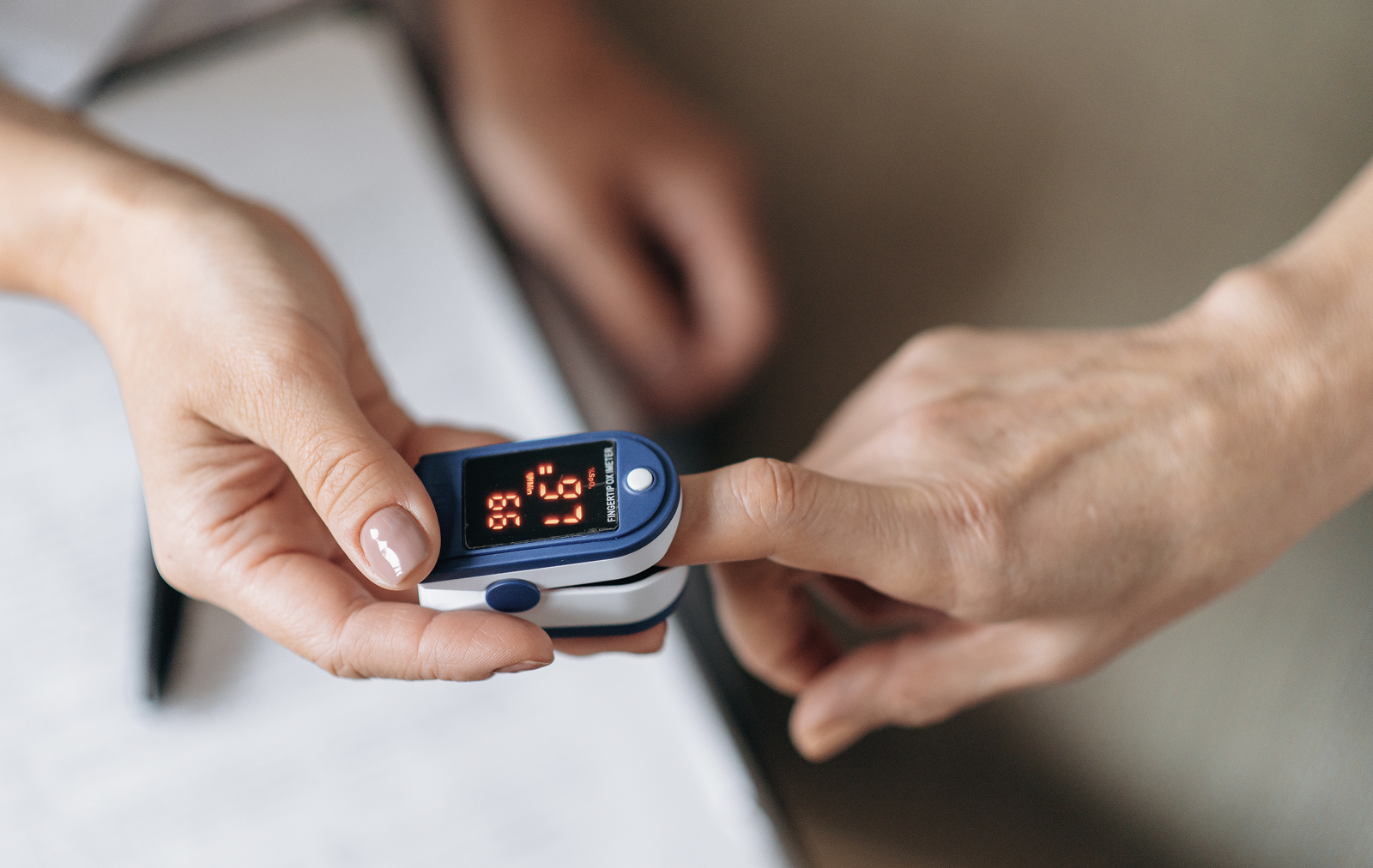
Keeping track of your blood oxygen level can help you better manage your condition. It can also help catch early warning signs. If you have a lung condition like COPD, it’s important to know your normal oxygen level when you’re feeling well. This ‘baseline’ can be helpful in recognising changes in your condition over time.
Blood oxygen, or oxygen saturation, measures the percentage of oxygen in your blood. Knowing this number helps assess if your body is getting enough oxygen. Normal oxygen saturation is typically between 95-100% for most people. People with lung conditions may have different target ranges. It’s important to understand what’s normal for you.
Blood oxygen is measured using a pulse oximeter, a small device that clips onto your finger. It uses light to calculate your oxygen saturation level. Pulse oximeters are easy to use, painless, and give instant results.
A pulse oximeter is a portable device that shows two numbers: your oxygen saturation (SpO₂) and pulse rate (bpm). These devices are commonly used in hospitals but are also available for home use. This is especially true for those managing chronic respiratory conditions. It’s a straightforward tool that requires little training.
To get accurate results from your pulse oximeter:
Normal oxygen levels vary. For someone with a lung condition, their target level might differ from the general guideline. It’s essential to find your “normal” by taking regular readings when you’re feeling well. Monitoring this baseline over time can help you notice any significant changes.
While Aide isn’t designed for continuous oxygen monitoring like in a hospital, it provides tools to help track your baseline.
For those with COPD or asthma, establishing your “normal” oxygen level when you’re feeling well is essential. Aide can guide you in recording and monitoring this information.
If you notice any significant drop in your oxygen level, you should follow your action plan or flare-up plan. Or contact your healthcare professional.
Disclaimer
This article is for educational purposes only and should not be used as a substitute for medical advice. Always speak to your doctor, nurse or pharmacist about your individual care. The information reflects NHS and NICE guidance at the time of publication.